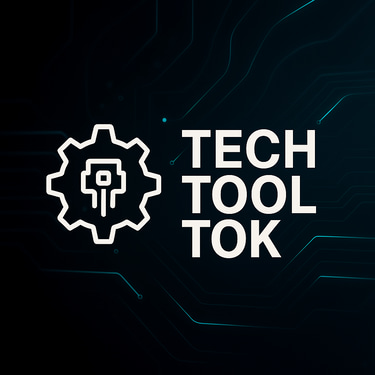Kickstart Your Freelancing Career in 2025: A Comprehensive Guide
8/13/20255 min read



Identifying In-Demand Freelance Skills
To successfully navigate the evolving freelance landscape of 2025, it is essential to identify skills that hold strong market demand. Freelancers can utilize a variety of resources such as LinkedIn, job boards, and market analysis reports to discern trends within their respective industries. For instance, platforms like LinkedIn Learning often provide insight into which skills professionals are acquiring, thereby indicating areas of high demand.
Conducting thorough research is crucial. Start by exploring online freelance marketplaces such as Upwork or Fiverr; these platforms often highlight the most sought-after skills by listing the most active job postings. Additionally, examining annual reports focusing on workforce trends can yield valuable insights into emerging industries and skill sets. Keep an eye on industries like technology, digital marketing, and health services, which consistently show growth and demand for skilled freelancers.
Another key factor is aligning these in-demand skills with personal strengths and interests. Freelancers are more likely to succeed when they choose niches that resonate with their passion. Consider analyzing your existing skillset to pinpoint what you enjoy and how that aligns with market needs. For example, a graphic designer may pivot to specialize in UX/UI design if research indicates an influx of opportunities in that area.
Moreover, acquiring new skills is increasingly important in this dynamic environment. Online courses, workshops, and mentorship programs can be effective strategies for freelancers aiming to broaden their qualifications. Many successful freelancers started in conventional roles before transitioning to in-demand areas through persistent learning and adaptation. For instance, a content writer may branch out into SEO-focused copywriting after identifying a growing trend, leveraging newfound skills to secure more lucrative projects.
Building a Strong Personal Brand
Establishing a robust personal brand is crucial for freelancers aiming to stand out in a competitive marketplace. The first step in this process is to define your unique value proposition (UVP). Your UVP should encapsulate the specific benefits and skills that differentiate you from other freelancers in your niche. To articulate this effectively, consider what problems you solve for clients, what expertise you possess, and how your approach is distinct. By crystallizing these elements, you can communicate precisely what makes your services indispensable.
Another vital aspect of building a personal brand is crafting a memorable elevator pitch. This brief, persuasive speech allows you to encapsulate your freelance identity and offerings in a concise manner. Aim for clarity and impact, highlighting your skills and experience in a way that sparks interest. Ideal elevator pitches are easily digestible, engaging, and reveal your passion for the work you do. Practicing this pitch ensures you can present yourself confidently in networking situations, bolstering your brand's visibility.
Social media platforms play a significant role in enhancing your personal brand. It is essential to choose the right channels based on where your target audience spends their time. Platforms like LinkedIn, Twitter, and Instagram can be advantageous for various freelancing fields. Regularly sharing content that showcases your expertise, engaging with your audience, and networking within relevant communities can significantly increase your visibility. Consistency is key; develop branding materials such as logos, color schemes, and bio descriptions that reflect your identity and ensure uniformity across profiles.
Inspiring case studies reveal how successful freelancers have effectively built their personal brands. For instance, a graphic designer who used Instagram creatively to showcase her portfolio not only attracted clients but also engaged followers with her personal journey. Similarly, a freelance writer who shared insightful articles on LinkedIn built credibility and captured the interest of potential clients. These examples underscore the significance of proactive branding activities in cultivating a recognizable presence in the freelancing landscape.
Creating a Professional Online Portfolio
Building a professional online portfolio is crucial for freelancers seeking to showcase their skills and work experience effectively. The right portfolio not only highlights your capabilities but also establishes your credibility in a competitive freelancing market. To start, choose a platform that aligns with your objectives. Popular options such as WordPress, Wix, and Squarespace provide customizable templates designed to display your work attractively. Additionally, ensure the platform is user-friendly and mobile-responsive, as many clients browse portfolios on their devices.
Once the platform is selected, focus on displaying relevant work samples. Choose previous projects that reflect your best work and are aligned with the services you offer. Quality trumps quantity here; select a maximum of 10 projects that demonstrate your range and expertise. For each project, write compelling descriptions that detail your role, the challenges faced, and the results achieved. This approach not only showcases your skills but also communicates your problem-solving capabilities to potential clients.
Incorporating client testimonials can significantly enhance the effectiveness of your portfolio. Positive feedback adds a layer of trust and validates the quality of your work. Aim to gather testimonials that highlight specific aspects of your collaboration and the outcomes of your efforts. Additionally, consider including case studies that delve deeper into selected projects. This will provide prospective clients with insights into your workflow and thought processes, further solidifying their confidence in your abilities.
Lastly, optimization for search engines is vital to ensure that your portfolio can be discovered by potential clients. Use relevant keywords throughout your portfolio while maintaining a natural flow to avoid keyword stuffing. Include meta descriptions, alt tags for images, and share your portfolio link on social media to enhance its visibility. A well-optimized portfolio can significantly increase your chances of being noticed by the right clients.
Finding Clients and Managing Projects
Securing clients is a crucial aspect of establishing a successful freelancing career. Platforms such as Upwork and Fiverr provide excellent avenues for freelancers to showcase their skills and connect with potential clients. To distinguish oneself from the multitude of competitors on these platforms, it is essential to develop a strong profile that highlights specific skills, experiences, and accomplishments. Utilizing a professional photo, an engaging bio, and relevant work samples can significantly enhance one's visibility and appeal to clients seeking expertise.
Writing winning proposals is another vital strategy for freelancers aiming to win projects. A compelling proposal should be tailored to the specific requirements of each job listing, demonstrating a clear understanding of the client's needs. It is beneficial to address how your skills and experiences align with the project goals, while also providing examples of past successes. Moreover, including questions regarding the project can exhibit interest and professionalism, making your proposal stand out among others.
Client ratings and testimonials play a pivotal role in establishing credibility on freelancing platforms. Actively seeking feedback from clients after project completion can help build a robust reputation. Positive reviews not only enhance visibility within the platform but also attract new clients looking for reliable freelancers. In addition, setting competitive rates requires research and consideration of factors such as market demand, individual expertise, and the complexity of projects. It is crucial to find a balance that reflects the value of your work while remaining attractive to clients.
Managing contracts and payments securely is vital to protect both parties involved in a freelancing arrangement. Using the platform's built-in features to handle payments minimizes the risk of disputes significantly. Furthermore, integrating AI tools can streamline processes and enhance productivity. For example, AI can assist with invoicing and task management, allowing freelancers to focus more on delivering quality work rather than getting bogged down by administrative tasks. These strategies collectively empower freelancers to thrive in an increasingly competitive landscape.

